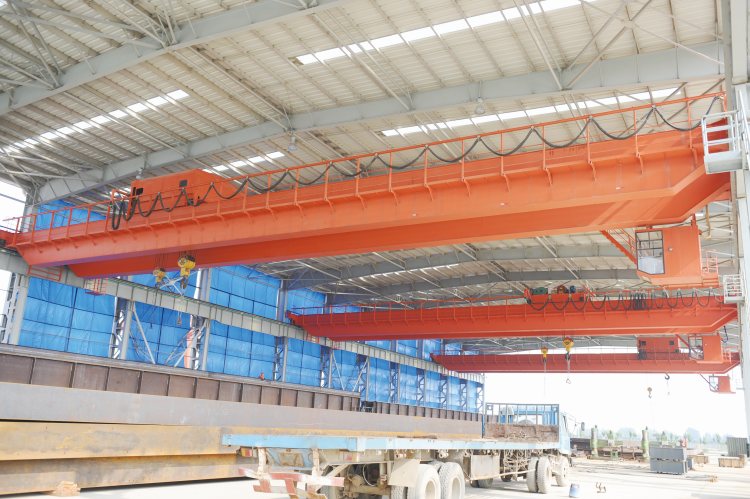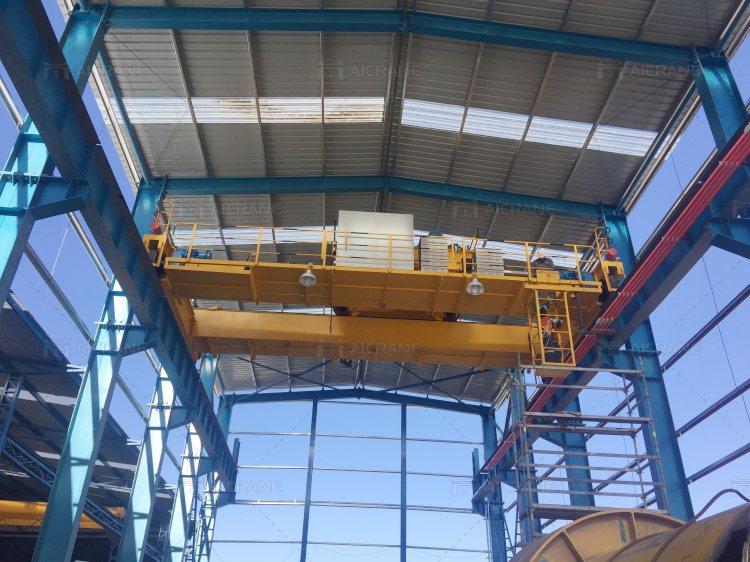In the world of heavy industry, efficiency, precision, and safety are paramount. When it comes to moving colossal loads, few machines can match the sheer power and capability of a 50-ton overhead crane. These engineering marvels have become indispensable tools in a variety of sectors, from manufacturing and construction to shipyards and warehouses. In this article, we’ll explore the excellence of a 50-ton overhead crane, delving into its design, applications, benefits, and the vital role it plays in today’s industrial landscape.
The Anatomy of a 50-Ton Overhead Crane
Before we dive into the multitude of tasks a 50 ton overhead crane can perform, let’s take a closer look at its key components and design.
- Bridge Girder: The bridge girder is the horizontal beam that spans the width of the workspace. It moves along a set of parallel runways, allowing the crane to cover a significant area.
- Hoist: The hoist is the lifting mechanism attached to the bridge girder. In the case of a 50-ton overhead crane, it’s designed to handle loads of up to 50 tons, making it a heavyweight champion in the world of cranes.
- Trolley: The trolley is the mechanism that moves horizontally along the bridge girder, positioning the hoist precisely where it’s needed.
- End Trucks: End trucks support the bridge girder and facilitate its movement along the runways.
- Control System: Advanced control systems, often including remote operation, ensure precise and safe maneuverability of the crane.

Applications of a 50-Ton Overhead Crane
The lifting capability of a 50-ton overhead crane opens the door to a wide range of applications:
- Heavy Manufacturing: In manufacturing plants, these cranes are used to transport massive components, machinery, and raw materials. They play a crucial role in streamlining production processes and reducing downtime.
- Shipbuilding and Docks: Shipyards rely heavily on 50-ton overhead cranes to move ship sections, engines, and other oversized components. Their precision is vital in ensuring the structural integrity of vessels.
- Construction: In construction, these cranes are employed to lift and position heavy steel beams, concrete panels, and equipment. Their ability to handle immense loads contributes to the timely completion of projects.
- Warehousing: Large distribution centers and warehouses benefit from 50-ton overhead cranes for the efficient movement of pallets, heavy machinery, and materials. This boosts storage capacity and enhances order fulfillment.
- Mining: In the mining industry, these cranes are used for tasks such as relocating mining equipment, transporting ore, and maintaining underground infrastructure.
- Aerospace: Aerospace facilities utilize 50-ton overhead cranes to handle aircraft components and engines, ensuring precision and safety in the assembly process.
The Benefits of a 50-Ton Overhead Crane
- High Load Capacity: The most apparent advantage of a 50-ton overhead crane is its ability to handle incredibly heavy loads, reducing the need for manual labor or multiple cranes.
- Enhanced Efficiency: These cranes are known for their speed and accuracy, leading to increased productivity and shorter project timelines.
- Safety: Advanced safety features, such as overload protection and collision avoidance systems, make these cranes incredibly safe to operate.
- Cost Savings: Over time, the efficiency and reduced downtime provided by a 50-ton overhead crane can result in significant cost savings for businesses.
- Versatility: These cranes can be customized to suit specific needs, including specialized attachments for unique lifting tasks. 50 ton overhead cranes generally adopt double girder bridge crane type due to the large lifting capacity.

The Role in Modern Industrial Operations
In today’s fast-paced industrial landscape, where time is money, a 50-ton overhead crane plays a pivotal role. Its ability to handle heavy loads with precision and speed has transformed the way industries operate. Here’s a closer look at its role in modern industrial operations:
- Streamlined Production: Manufacturers rely on these cranes to transport raw materials and components seamlessly across the production floor. This minimizes downtime and optimizes production schedules.
- Reduced Labor Costs: Manual lifting of heavy objects is not only inefficient but also poses safety risks to workers. By automating lifting tasks, companies can reduce labor costs and workers’ compensation claims.
- Adaptability: With customization options, businesses can configure their 50-ton overhead cranes to suit specific requirements, allowing them to adapt to changing production needs.
- Just-in-Time Inventory: Warehouses and distribution centers utilize these cranes to maintain just-in-time inventory systems, ensuring that products are readily available when needed.
- Construction Efficiency: In the construction sector, the timely delivery and placement of heavy materials are crucial. 50-ton overhead cranes expedite these processes, contributing to on-time project completion.
Safety and Maintenance
While the power and efficiency of a 50-ton overhead crane are impressive, safety remains a top priority. Routine maintenance and inspections are essential to ensure safe operation. Some critical safety considerations include:
- Regular Inspections: Routine inspections of all components, including hoists, trolleys, and control systems, are crucial to identify and address potential issues.
- Operator Training: Operators should undergo thorough training to understand the crane’s capabilities and safety procedures.
- Load Monitoring: Advanced load monitoring systems help prevent overloading, a critical safety concern in heavy lifting operations.
- Emergency Procedures: Clear emergency procedures should be in place to handle any unexpected situations, such as power failures or equipment malfunctions.
In the world of heavy lifting, a 50-ton overhead crane stands as a symbol of efficiency, power, and precision. Its ability to handle colossal loads has transformed industries, from manufacturing and construction to shipbuilding and aerospace. As technology continues to advance, these lifting cranes will likely become even more versatile and integral to modern industrial operations. However, it’s essential to remember that with great power comes great responsibility, and safety and maintenance must always remain at the forefront of crane operation. As long as these principles are upheld, the excellence of a 50-ton overhead crane will continue to shape the future of industry.
